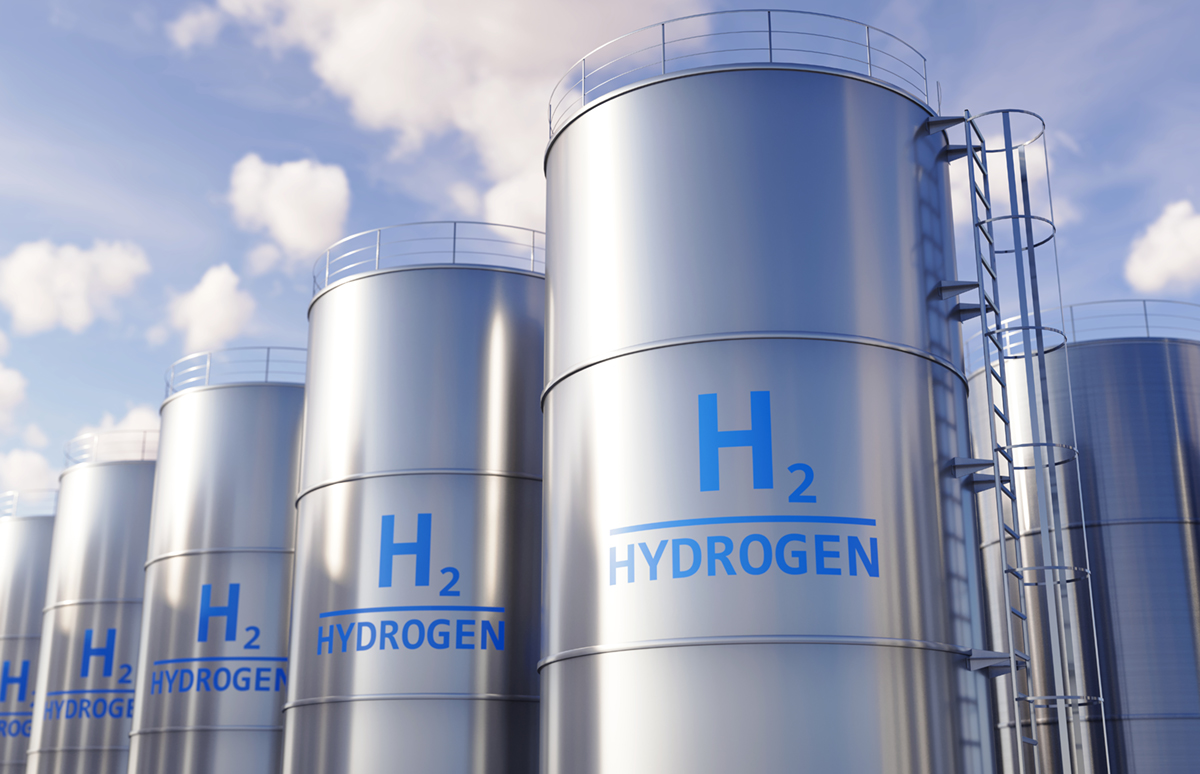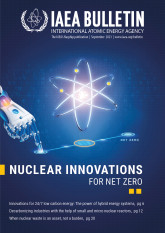
If you would like to learn more about the IAEA’s work, sign up for our weekly updates containing our most important news, multimedia and more.
Decarbonizing Steel Production with Nuclear Hydrogen
Mariia Platonova

Using low carbon nuclear power to produce hydrogen could have an impact on the decarbonization of the steel industry. (Photo: Adobe Stock)
Steel production accounts for more than seven per cent of global carbon dioxide (CO2) emissions. That percentage is set to soar in the coming decades, along with a rising demand for steel, which is vital for sectors ranging from energy and transport to construction and consumer appliances. However, nuclear energy could help put steel production on a path to net zero.
About two billion tonnes of steel are produced annually around the world. According to the International Energy Agency, steel demand is projected to rise by more than a third by 2050, mainly in developing countries. A growing number of global companies are looking for ways to decarbonize the energy-intensive industrial processes of this sector.
The steel industry largely depends on coking coal to power blast furnaces, which turn iron ore into steel, a process that emits large quantities of CO2. However, it is possible to create steel using a method called direct reduction of iron, in which hydrogen reacts with iron ore without melting and emits water vapour and no CO2.
Several countries around the world are exploring and testing the use of nuclear energy to produce clean hydrogen, including for use in the production of steel.
“The amount of hydrogen needed to create green steel is staggering. Traditionally, fossil fuels have been used to generate almost all hydrogen, therefore finding the necessary amount of decarbonized hydrogen is going to be one of the biggest challenges,” said Francesco Ganda, Technical Lead for Non‑Electric Applications at the IAEA. “Nuclear hydrogen production, with zero emissions, can really be a game changer for the sector, as nuclear power has the potential to provide sufficient heat and electricity 24/7 to produce the required amount of hydrogen. This could help to make huge strides in the clean energy transition.”
Nuclear power reactors coupled with a hydrogen production plant can efficiently produce both energy and hydrogen as a cogeneration system, fitted with components for either electrolysis or thermochemical processes. Electrolysis is the process of inducing water molecules to split using a direct electric current, producing both hydrogen and oxygen.
Water electrolysis operates at relatively low temperatures of less than 100 degrees Celsius, while steam electrolysis operates at much higher temperatures of around 700 degrees to 800 degrees Celsius and requires less electricity than water electrolysis. Water electrolysis is a process whereby electricity is used to separate the hydrogen from the oxygen in water. This type of technology has been commercially available for decades. High temperature electrolysis follows the same principle but uses water in the form of steam, thereby reducing the amount of electricity required.
Advances in electrolyser technologies are making hydrogen production from conventional nuclear power reactors more efficient and cheaper. At least one nuclear power plant in the United States of America — Prairie Island in Minnesota — is installing a high temperature electrolyser and is using heat from the reactor to lower the electricity use and, therefore, the cost of nuclear hydrogen production.
“The high-temperature process of solid oxide electrolysers can take advantage of heat energy from a nuclear power plant in the form of steam, giving the electrolyser an incredibly high efficiency rate,” said Akhil Batheja, Director of Hydrogen Business Development at Bloom Energy, a company that produces solid oxide fuel cells for energy generation. “Since electricity costs represent the majority of costs involved in electrolysed hydrogen, this presents the best economic value proposition for a nuclear power plant and for creating low carbon hydrogen.”
Role of the IAEA
The IAEA helps countries by supporting research into existing nuclear capacity usage for hydrogen production, including through coordinated research projects. To help countries in evaluating, planning and strategizing the development of nuclear hydrogen projects, the IAEA also organizes technical meetings and has developed the Hydrogen Economic Evaluation Programme, a tool to assess the techno-economic viability of large-scale hydrogen production using nuclear energy. Additionally, in 2022, the IAEA launched an initiative to develop a road map for the commercial deployment of hydrogen production using nuclear energy and released an e-learning course on hydrogen production through nuclear cogeneration.
“Several countries around the world are exploring and testing the use of nuclear energy to produce clean hydrogen, including for use in the production of steel,” said Aline des Cloizeaux, Director of the IAEA Division of Nuclear Power. “With the advent of new and more efficient electrolyser technology, and with the deployment of advanced reactor technologies, such as high temperature reactors, on the horizon, nuclear energy is well placed to provide a key contribution to clean hydrogen production and the decarbonization of steel production and other industries.”





